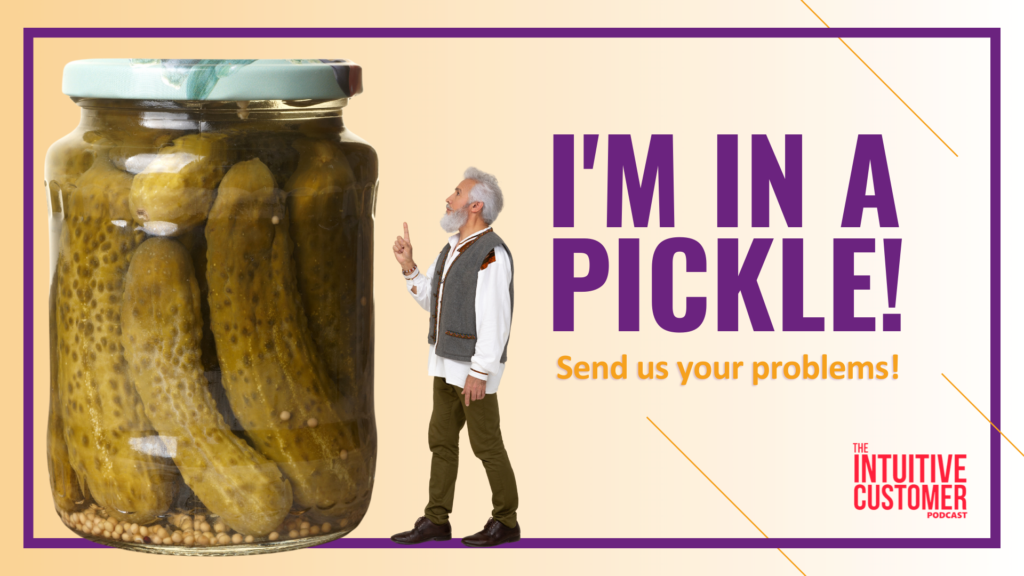It is essential to recognize when your customer decides to buy from you (or doesn’t). Once you identify when that happens, you can design an appropriate environment to get customers to decide to do what you want.
 This customer decision point reminds me of the phrase, “Crossing the Rubicon.” The Rubicon river was a boundary to the north of Rome. If a general crossed it with an army, the Senate saw that as grounds for treason. The story is that Julius Caesar crossed it and said, “Now, the die has been cast.” (Of course, he said, “Alea iacta est.”) He referred to the fact that he had committed treason by crossing the river with his army and was past the point of no return.
This customer decision point reminds me of the phrase, “Crossing the Rubicon.” The Rubicon river was a boundary to the north of Rome. If a general crossed it with an army, the Senate saw that as grounds for treason. The story is that Julius Caesar crossed it and said, “Now, the die has been cast.” (Of course, he said, “Alea iacta est.”) He referred to the fact that he had committed treason by crossing the river with his army and was past the point of no return.
I included this Roman history lesson here because your customers also “cross the Rubicon” when they decide something in your experience. Psychology refers to this as the Rubicon Model of action phases in decision-making that describes our mindset when we choose. We have different processes that we go through when deliberating versus deciding. The deliberative mindset takes in information; the implementing mindset commits to and maybe defends the decision.
These psychological barriers are not insurmountable. Instead, these mental processes are now making that other choice less likely. One way to think about it is that we like things to be settled. However, different people want things fixed to a different degree. Moreover, we want to feel like we’ve made the right decision, whatever decision we’ve made.
People have their timing on decisions, too. Sometimes, I make too quick a judgment on things, which can be a disadvantage. On the other hand, some people procrastinate or deliberate too long, which also has disadvantages. Either way, fast or slow, you are on one or the other side of the decision Rubicon.
In other words, deciding changes our perspective on things in an experience and how we assign importance. Therefore, your experience design should support and complement these mindset shifts.
Identifying the Decision-Making Moment
 So, how do you know where your customer is in the decision-making process? First, I would suggest listening to people’s words and the questions they ask. For example, if a customer wants to know things like, “how does this work?” they are likely in a deliberative mindset still, weighing their options and getting more information. However, if the customer says, “when could I expect delivery?” or other detailed questions, then you know they have crossed the Rubicon to buying. On the contrary, questions about cancellation fees might indicate the customer decided to leave. If you can note a difference in the types of questions that people ask and the topics they want to discuss, you can get a better sense of where they are relative to this decision.
So, how do you know where your customer is in the decision-making process? First, I would suggest listening to people’s words and the questions they ask. For example, if a customer wants to know things like, “how does this work?” they are likely in a deliberative mindset still, weighing their options and getting more information. However, if the customer says, “when could I expect delivery?” or other detailed questions, then you know they have crossed the Rubicon to buying. On the contrary, questions about cancellation fees might indicate the customer decided to leave. If you can note a difference in the types of questions that people ask and the topics they want to discuss, you can get a better sense of where they are relative to this decision.
However, to buy or not to buy is not the only decision made in an experience. That one is the most significant to you, of course, but there are a lot of other choices along the way. You could even say that deciding not to decide is a choice. It is a choice to continue to deliberate.
The deliberative mindset is not purely rational either. The reason you are putting off the decision might not be because of an objective basis. Instead, it could be that it doesn’t “feel” right.
The Rubicon model of action phases is a way of breaking down decision-making. However, it is not only for critical decision-making; it also includes small decisions. Therefore, the model applies to almost any decision we make every day.
At this point, I see journey mapping creating a significant advantage for organizations. Of course, the big decision in most journey maps involves purchase decisions. However, many more minor choices show up on the map, too.
For example, if you’ve got a stage in your journey map regarding information gathering or research, you can see that’s a deliberative mindset stage. Other stages, where the person is already committed to some course of action, would be an implementable stage. So, as you go through your journey map, can you use this Rubicon model to figure out what type of mindset, deliberative, or implementation the person is likely to be in at each stage, which will give you some insight into how you can approach them.
Building on that, a key question becomes what decisions does the customer have to make here? How are they going to make that decision? What can I provide to help them choose what I want them to do? How early should I introduce this information for them to decide by this point in the journey map? Again, the possibilities for design here are endless.
For example, since the purchase decision tends to be emotional, you know that engaging the person is essential to a yes.
 So, if the person needs to feel like they trust the organization at this point, you can see that building trust should begin at least three stages before that.
So, if the person needs to feel like they trust the organization at this point, you can see that building trust should begin at least three stages before that.
Also, rational information should show up on the journey map. Find the different objective things throughout that might influence people at various stages. For example, if you introduce the price levels before making the value proposition, you could lose some people before you ever get a chance to present it to them. Usually, it’s best to have the value proposition built in earlier in the process, even if they don’t ultimately affect the decision until many stages later.
We know about the deliberative mindset that customers are much more open to information because it’s like we’re in this learning phase. However, when we’re in the implementation mindset, we shut down many of those processes. We want to get things happening.
Also, different types of people make decisions in various ways. Some people want all the information and wish to decide slowly and intentionally. Other people are satisfied with a choice that’s good enough, and then they want to get on with their lives.
So…What Should I Do with This?
Regarding practical takeaways regarding customers’ decision-making, there are a few.
- Recognize the importance of decisions psychologically. A decision is not just another step in a journey. A decision marks a significant change in the way people think.
- Know where customers are in the decision-making journey along your process. So, as you’re making your journey maps and anticipating your customer and what they want, identify those decisions and those decision points. Then, determining the different approaches will help people, depending on the side of the choice that they are on.
- Have a different approach for managing the process after the decision, too. The things that will facilitate a decision are not necessarily the same things that will make a customer happy afterward. Adapt to their needs after decision-making, too.
- Recognize that there is more than one type of decision throughout the process. From the journey maps perspective, we’re not just talking about big decisions and small decisions; we are talking about many decisions. Consider these decisions the customer will make and how they will do that. Break it down into all the rational decisions, like delivery times, color, quantity, and things like that. Then, consider the emotional decisions, like do they trust you or feel cared for and appreciated? Journey maps are much more helpful with that type of information in there.
We realize of course that your customers making decisions in your experience is nothing like leading an army into committing treason. However, when it comes to passing the point of no return, your customers do cross a type of Rubicon in your experience. It is essential that you know where it happens, and that you design the experience to provide them all the things they need to make the decision you want. Journey maps help pin point and plan a customer strategy for decisions, to be sure, but so does understanding the psychology of decision-making. With these tools at your disposal, chances are that when the “die is cast” you will come out the winner instead of leaving it up to chance.
 If you have a business problem that you would like some help with, contact me on LinkedIn or submit your pickle here. We would be glad to hear from you and help you with your challenges.
If you have a business problem that you would like some help with, contact me on LinkedIn or submit your pickle here. We would be glad to hear from you and help you with your challenges.
There you have it. No promotions, no gimmicks, just good information.
Think reading is for chumps? Try my podcast, The Intuitive Customer instead. We explore the many reasons why customers do what they do—and what you should do about it. Subscribe today right here.


